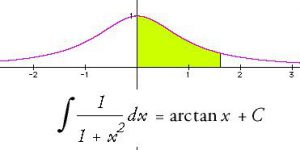Part 1: some basics on trigonometry, part 2 will provide insight into the use of the cubit and how it was used to determine where to build the holy sites.
What is trig and what can you do with it some of you will ask? It was historically used for astronomy and geography, but scientist have been using it for centuries for other purposes too. Besides other fields of mathematics, trig is used in physics, engineering, and chemistry.
Spherical trigonometry is needed to understand positions on a sphere. The earth too is a sphere, so can be used for navigation as well.
Although trigonometry is applied to spheres, it also has its application to planes. Surveyors have used it for centuries. Engineers, both military and civilian have used it for centuries as well.
Physics lays heavy demands on trigonometry. Optics and statics are two early fields of physics that use trigonometry, but all branches of physics use it. Since trigonometry aids in understanding space, related fields such as physical chemistry naturally use it.
Mathematics
Trigonometry is used throughout mathematics, and has many applications: calculus, linear algebra, and statistics. One thing that distinguishes trigonometry from the rest of geometry, is that trig depends on angle measurement and quantities determined by the measure of an angle. Trigonometric functions such as sin, cosine, and tangent are used in computations, and these functions relate measurements of angles to measurements of associated straight lines.
It is said that trig functions are not easy to compute like polynomials are, and so much time went into computing them in ancient times that tables were made for their values. Even with tables using trig functions takes time, because any use of a trig function involves at least one multiplication or division.
In the early 17th century computation sped up with the invention of logarithms and soon after slide rulers. And now with calculator computation it has become even easier.
But in truth this was known thousands of years ago, and they were able to calculate nearly as fast as you do with your calculator.
But one thing you will need to know is the “Pythagorean theorem”.
While I will not go into this all, if you wish to know more on this you will be able to find enough on the internet.
There are two commonly used units of measurement for angles. The more familiar unit is that of degrees. A circle is divided into 360 equal degrees. But degrees may be further divided into minutes and seconds.
The other common measurement for angles is radians. For this measurement, consider the unit circle (a circle of radius 1) whose centre is the vertex of the angle in question. Then the angle cuts off an arc of the circle, and the length of that arc is the radian measure of the angle. It is easy to convert between degree measurement and radian measurement: the circumference of the entire circle is 2 * pi * r = 2 * 3.1416, so it follows that 360 equals 2 Pi radians, Hence 1 degree equals PI/180 radians, and 1 radian equals 180/PI degrees.
Then there are chords as used in mathematics, it refers to a straight line drawn between two points on a circle. The first known table of trigonometry was a table of chords. In modern times the sine is used instead (they are related). A sine is half of a chord. More accurately: the sine of an angle is half the chord of twice the angle.
Then the definition of cosine: the cosine of an angle is defined as the sinus of the complementary angle. The complementary angle equals the given angle subtracted from a right angle. 90 degrees for instance: if the angle is 30 then its complement is 60 degrees.
Then the definition of the tangent which is the length of the vertical line (ED) tangent to the circle from the point of tangency (E) to the point (D) where that tangent line cuts the ray (AD) forming angle.
As said there is no need to study this in depth. Part two will open your eyes a little more, and those who do use trigonometry will realize it has far greater potential than they could ever have realized, and with seeing this become ears so they are able to hear and develop the ‘eyes to see’.
13-09-2006
Moshiya van den Broek

